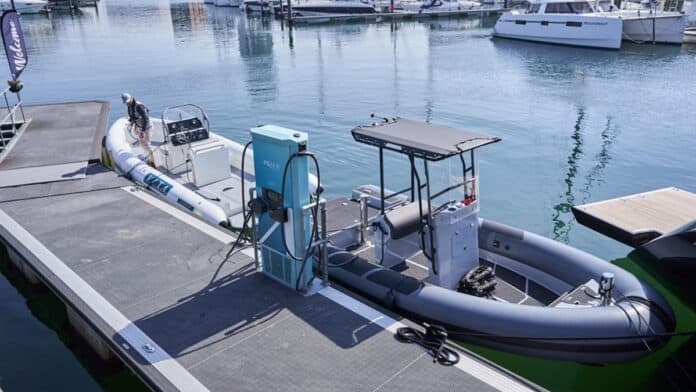Aqua superPower, in collaboration with its consortium partners, has delivered The Electric Seaway project, an initiative to install a marine charging infrastructure along the south coast of the UK.
The project was launched in June 2023 with £3.2 million in funding from the Department for Transport.
The project has established eight new charging sites and has developed solutions for deploying marine charging infrastructure in areas with limited grid connections, using advanced battery storage and renewable energy integration to overcome logistical challenges.
In addition, environmental sensors installed at all the charging sites will provide data to monitor ecological impacts and inform future decarbonisation strategies.
Aqua superPower has also introduced a new compatibility service, enhancing interoperability between charging systems and electric vessels.
Site delivery was carried out by ZPN Energy.
Our battery-backed charging technology has proven its value in overcoming infrastructure challenges.
James Foster
The project was led by Aqua superPower and ZPN Energy, alongside other partners including the University of Plymouth, South Hams District Council & West Devon Borough Council, Bournemouth, Poole and Christchurch Council, and the UK Harbour Masters’ Association.
“The Electric Seaway has been a resounding success, delivering on our vision to create a reliable and accessible charging network for electric vessels,” said Karen Gill, COO of Aqua superPower.
“This project showcases the power of collaboration and innovation in driving the decarbonisation of the maritime sector.
“We’re thrilled to see the south coast emerge as a hub for sustainable marine travel, offering both commercial operators and leisure users the confidence to embrace electric propulsion.
New infrastructure
“The Electric Seaway is one of many projects demonstrating and showcasing their project and technology around the UK in 2025, involving a variety of vessel types and new infrastructure in ports and harbours.”
James Foster, CEO of ZPN Energy, added: “Our battery-backed charging technology has proven its value in overcoming infrastructure challenges, ensuring rapid charging even in areas with limited grid capacity.
“The project provided valuable learning around third party chargers, allowing access to a retrofit model.
“Completing The Electric Seaway is a milestone for us and a testament to how public investment in innovation can deliver real-world impact.”






